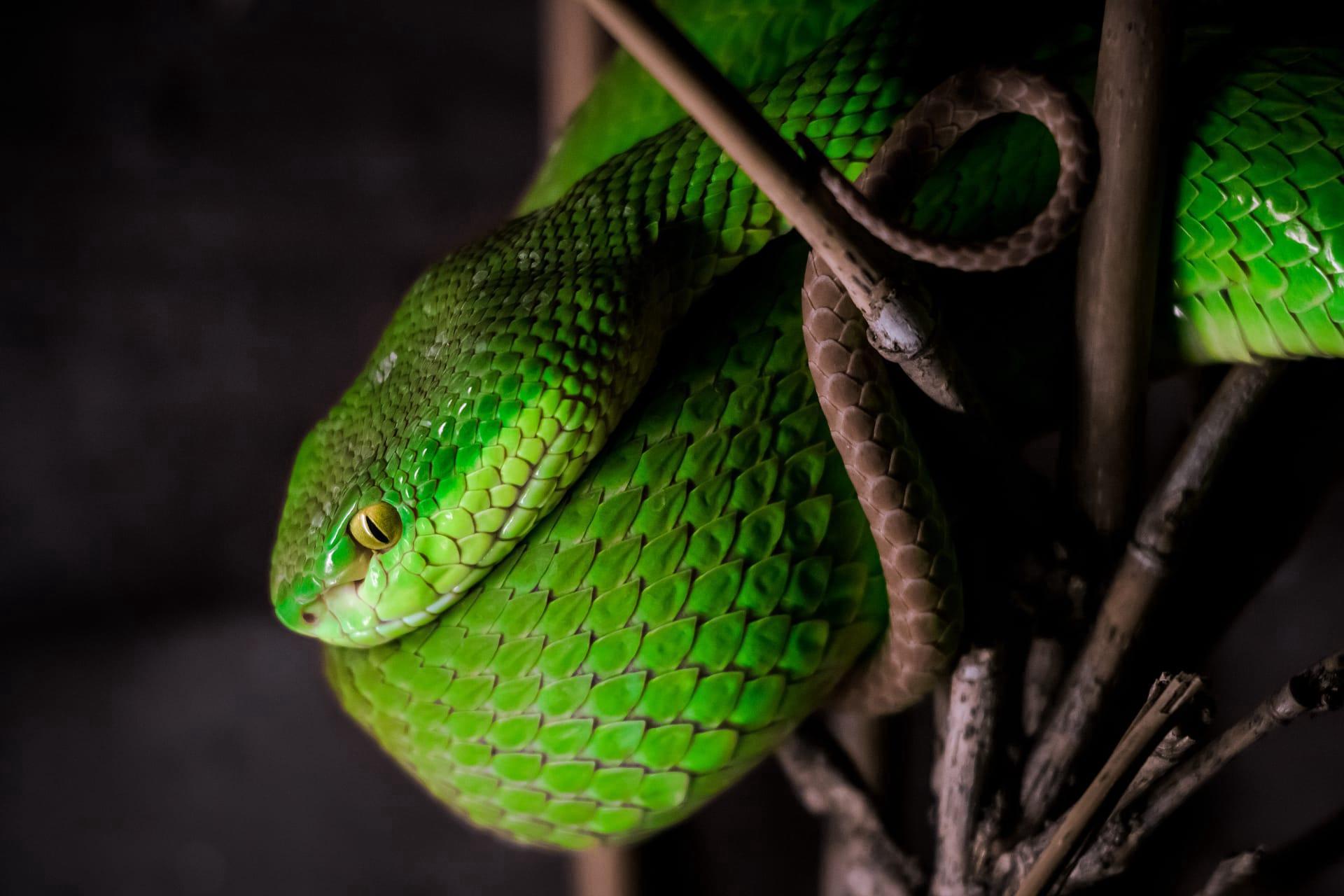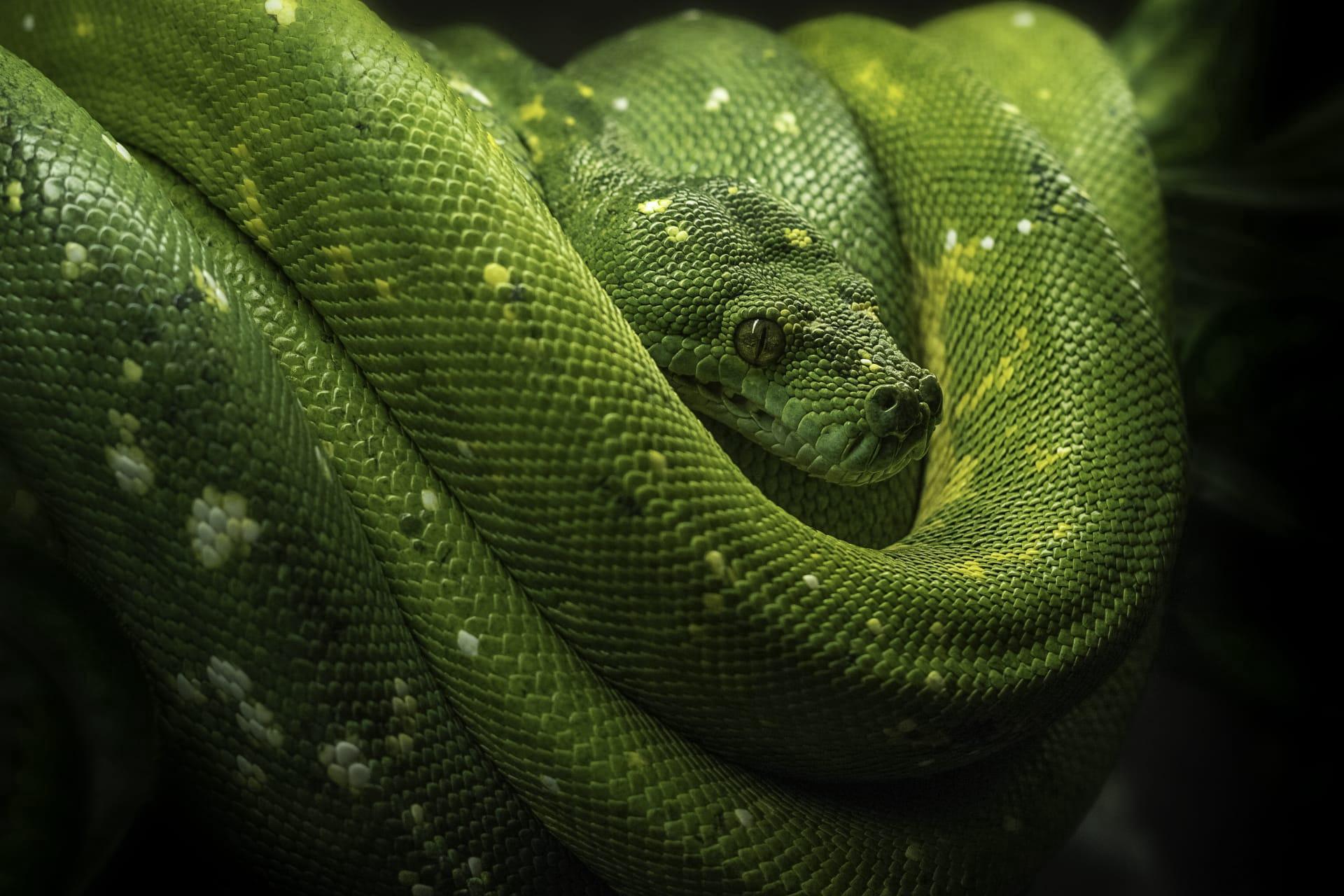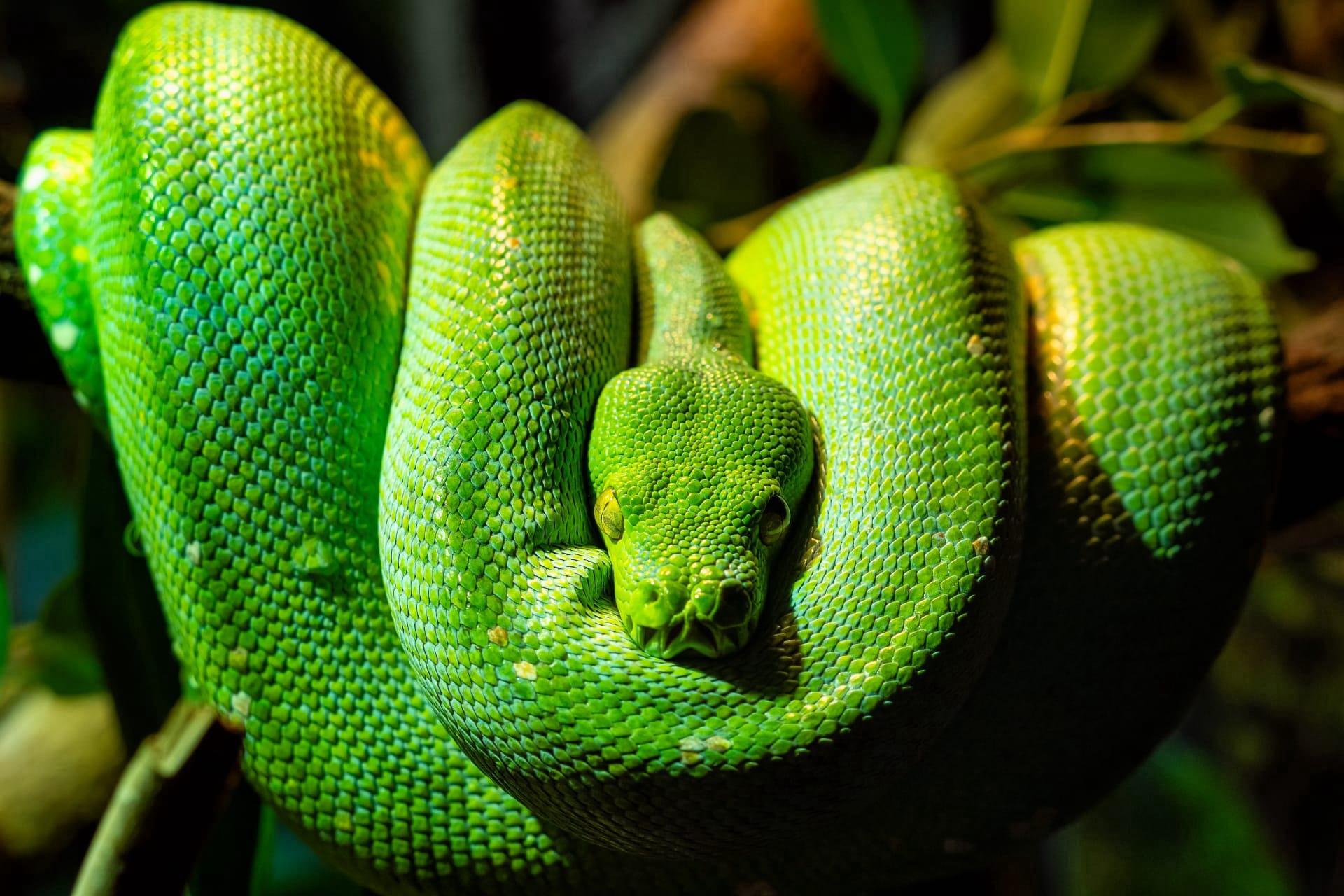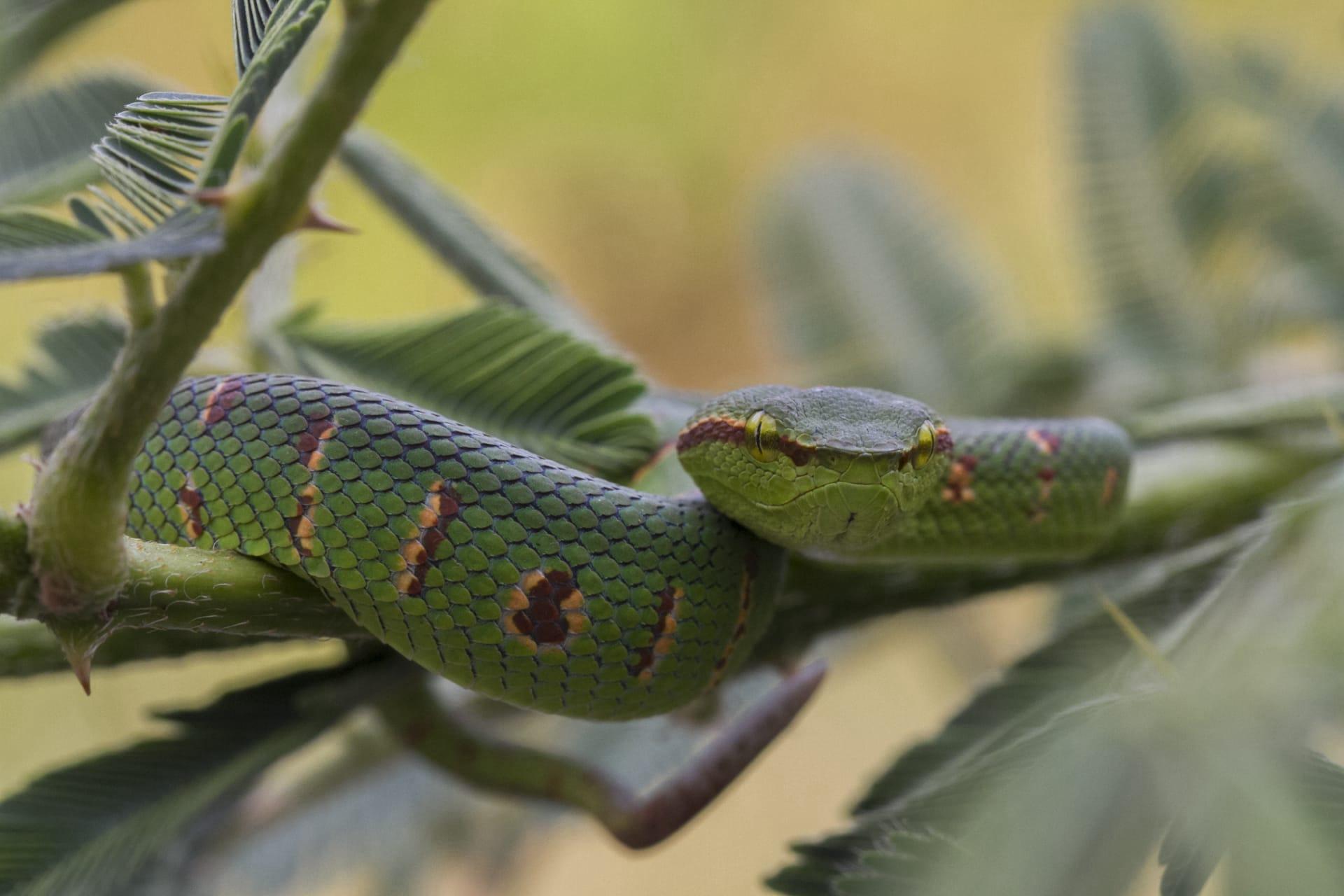Green Tree Python Characteristics
- Home /
- Mini Encyclopedia /
- Animal /
- Green Tree Python Characteristics
1
The Green Tree Python, a captivating reptile, is known for its striking bright green coloration, which serves as a superb camouflage amidst the lush foliage of its habitat. Adult Green Tree Pythons typically measure around 5 to 7 feet (1.5 to 2.1 meters) in length, showcasing a slender, muscular build ideal for arboreal life. These pythons have a remarkable lifespan, often living up to 15-20 years in the wild, and can even surpass 20 years under optimal care in captivity.
One of the most fascinating organs of the Green Tree Python is its heat-sensing pit organ, located between the eye and the nostril on each side of its head. This remarkable adaptation allows the snake to detect minute temperature variations in its environment, essentially providing a thermal image of its surroundings. This is particularly crucial for hunting in the dark, as it helps the python locate warm-blooded prey even in complete darkness. The precision of this organ is so acute that it can detect a change in temperature as slight as 0.003 degrees Celsius.

2
Question: How does the Green Tree Python adapt to its arboreal lifestyle?
Answer: The Green Tree Python is exquisitely adapted to life in the trees. Its prehensile tail, a hallmark of arboreal snakes, is incredibly strong and capable of supporting the snake's entire body weight as it navigates through the branches. This adaptation allows the python to maintain a stable and secure position while it waits for prey or rests. Additionally, their slender body aids in maneuverability among dense foliage, and their bright green color provides excellent camouflage, blending seamlessly with the leaves and branches of their habitat. These features collectively facilitate the python's arboreal lifestyle, making them adept climbers and elusive predators.

3
Green Tree Pythons are known for their unique locomotion, which is crucial for navigating the treetops. They exhibit a form of movement known as 'concertina locomotion', where they anchor their tail and rear body while extending the front part of their body forward, then pulling the rest of their body to catch up. This method is particularly effective for moving between branches and provides stability in their high-altitude environment.
In terms of hunting, the Green Tree Python is a master of ambush. It typically adopts a striking posture by coiling its body on a branch with its head hanging down in an S-shape. When prey comes within range, the python strikes swiftly, using its sharp teeth to grip the prey firmly. It then constricts its prey until it suffocates, demonstrating a potent combination of patience, precision, and power in its hunting strategy.

4
The Green Tree Python thrives in a variety of forested environments, primarily in New Guinea, Indonesia, and parts of Australia. Its preferred habitats are tropical rainforests, where humidity and temperature are ideal for its survival. These environments provide ample foliage for camouflage and a rich array of prey species. The python is often found in trees near water bodies, as these locations attract prey and provide necessary hydration.
Reproduction in Green Tree Pythons is fascinating. Females lay a clutch of 10-25 eggs, which they incubate through a process called 'shivering thermogenesis'. The female wraps around the eggs and produces muscle contractions to generate heat, maintaining a stable temperature for the developing embryos. Hatchlings are born with a completely different coloration, usually yellow or red, which gradually changes to the characteristic green as they mature. This color change is thought to enhance their survival, offering better camouflage at different stages of their life.

5
Book: "The More Complete Chondro" by Greg Maxwell is a comprehensive guide on Green Tree Pythons. Published in the United States in the early 2000s, this book delves into the care, breeding, and biology of these snakes. Maxwell, an experienced herpetologist, provides detailed insights into the species, making the book a valuable resource for both enthusiasts and professional breeders.
Book: "Green Tree Pythons: Natural History and Captive Maintenance" by Terry Phillip is another notable publication. Released in the late 2010s, it offers an extensive overview of the Green Tree Python's life in the wild and in captivity. Phillip, a renowned reptile expert, covers topics ranging from habitat preferences to health issues, aiming to enhance the understanding and welfare of these magnificent reptiles.